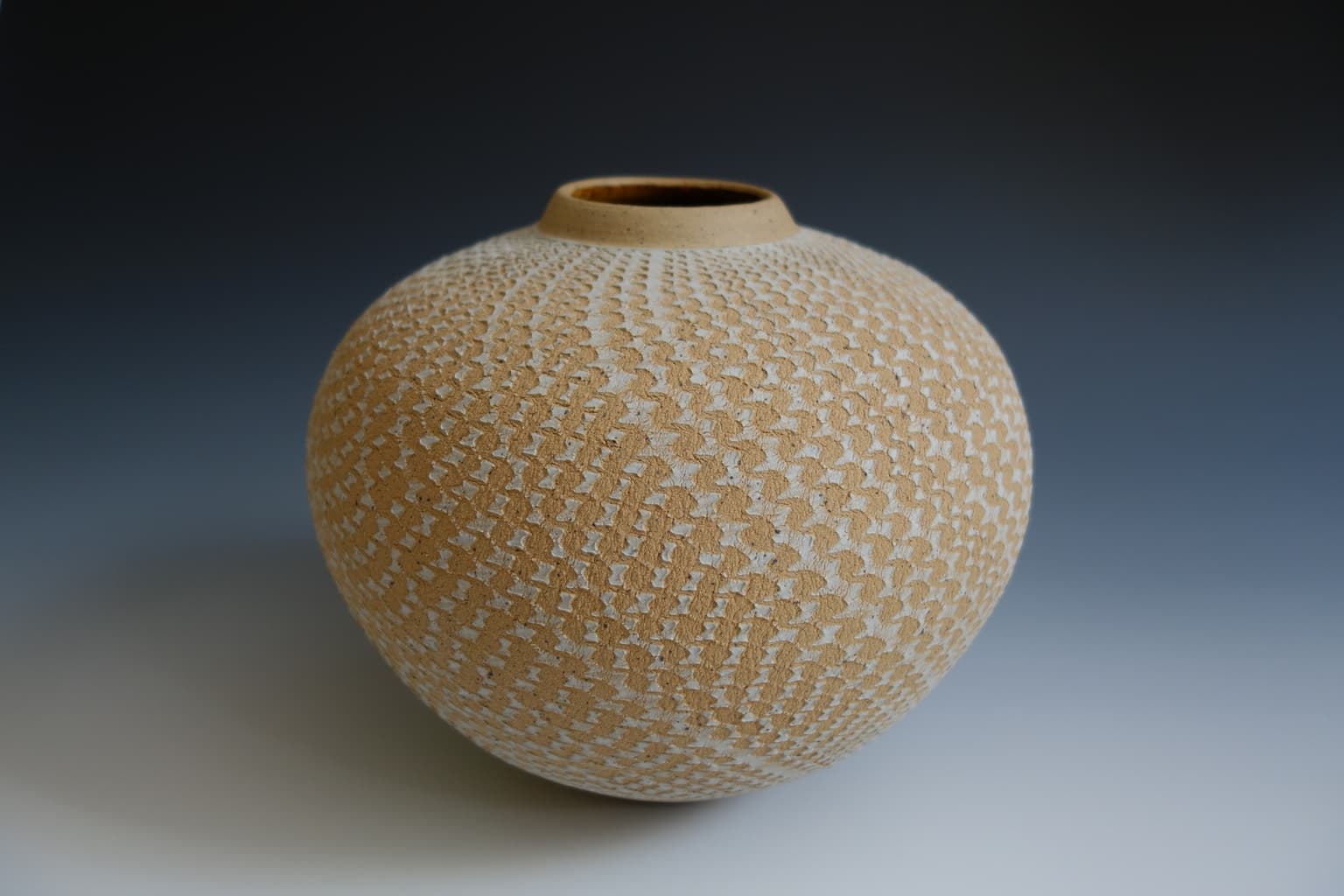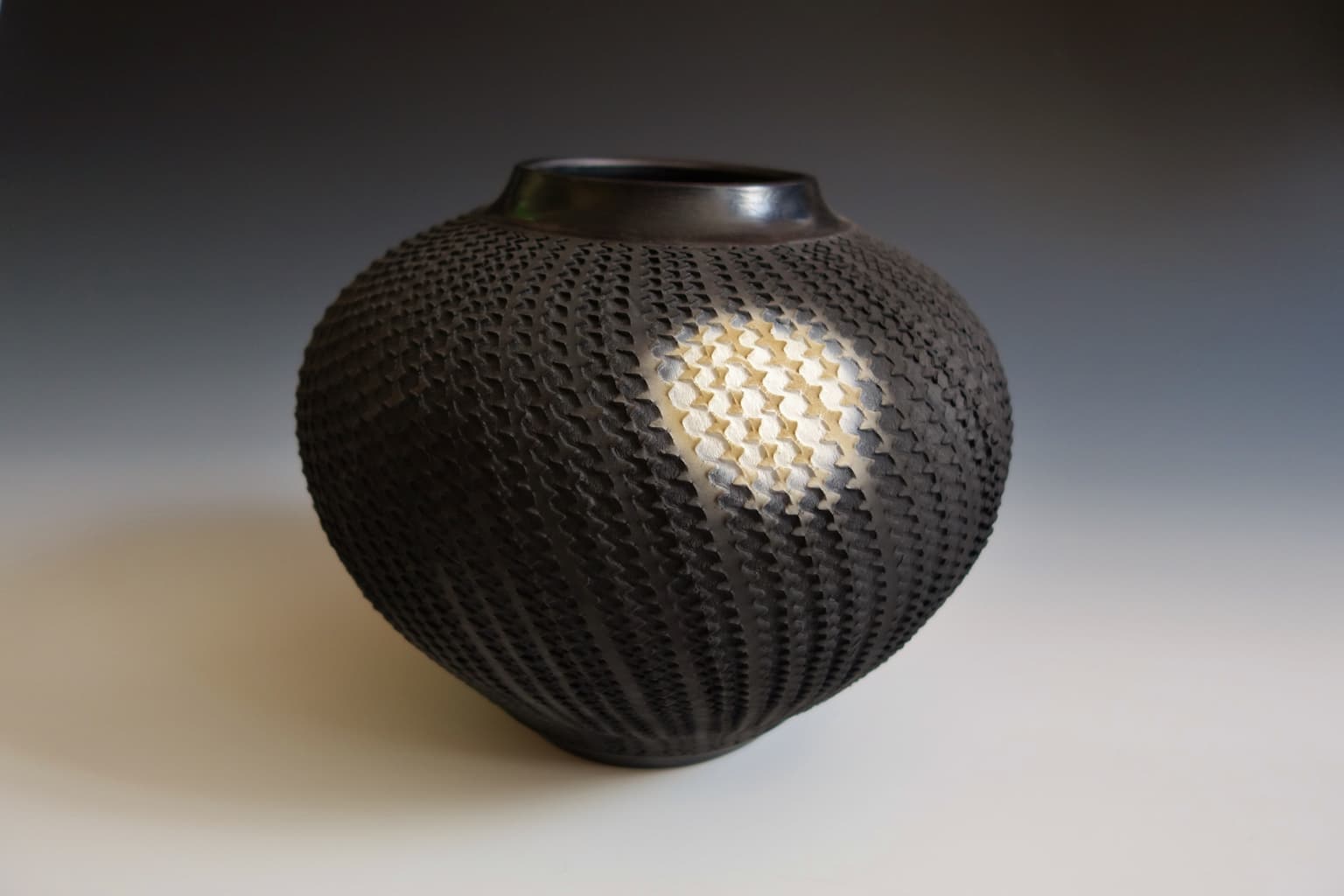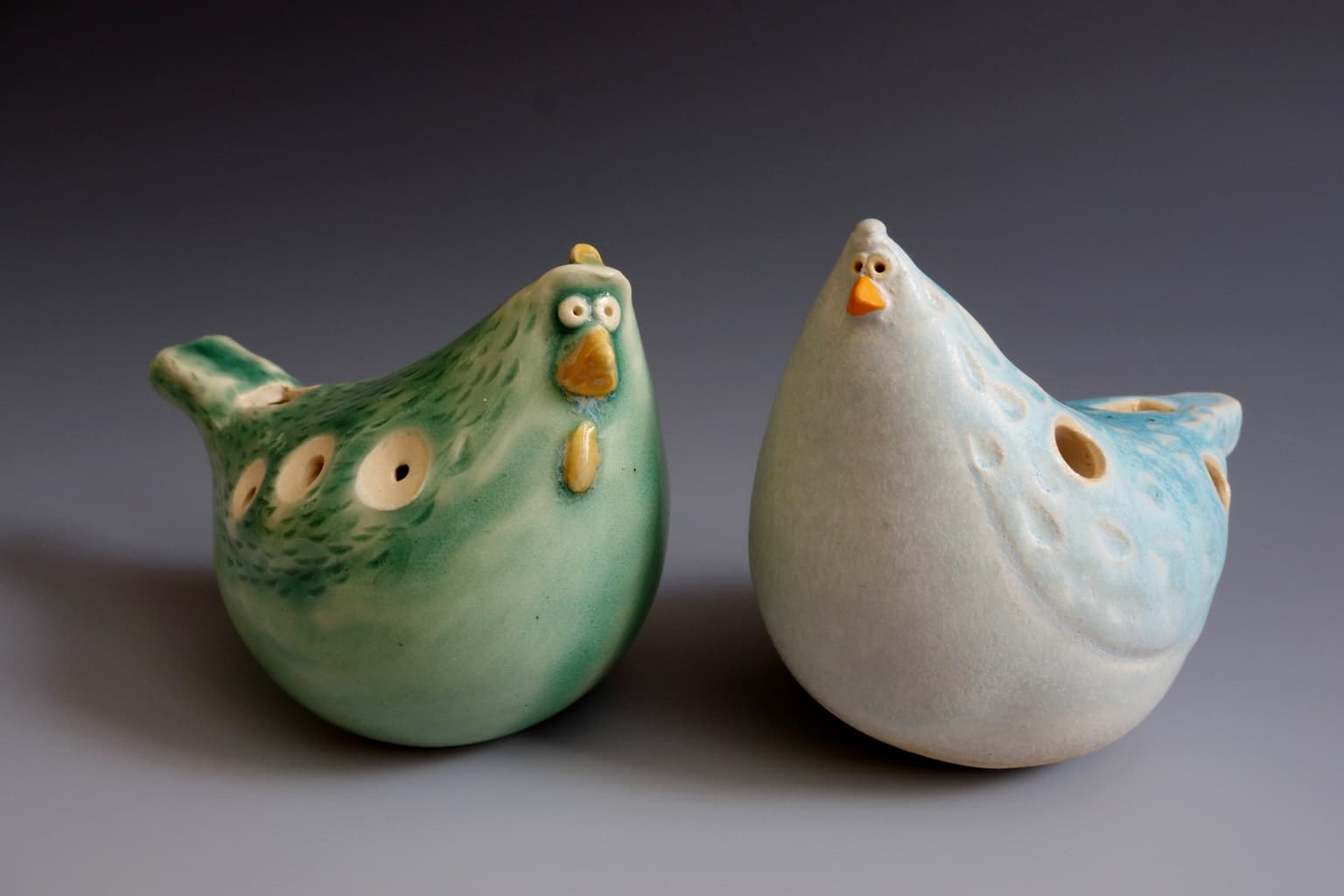Elizabeth Paley
Artists
Statement
A recovered academic with degrees in physics, astronomy, piano performance, and music theory, I took a beginning pottery class in 2002 and have been hooked ever since. My art often begins with wheel-thrown pieces that I subsequently alter, cut, and assemble.
Artworks

Zigzag Vessel
21 x 24 x 24 cm
Oxidation-fired brown stoneware, lilac slip, amber liner glaze
2013
The decorated surface of this wheel-thrown vessel began with vertical zigzag lines sliced into the slipped surface of a tall, narrow clay cylinder. As the cylinder spun on the wheel, I executed a homeomorphic transformation by stretching the clay outward from the inside, leaving the exterior surface untouched. The clay stretched apart the most where it was weakest (along the slices), while frictional drag torqued the surface into a spiral. This sort of stretch-torque transformation presumably happens when any clay pot is expanded on the wheel; here, the untouched lines on the surface nicely map the transformation, making it clearly visible.

Singularity
19 x 23 x 23 cm
Saggar-fired white stoneware, red iron oxide slip
2014
This black zigzag pot was stretched and torqued in the same manner as the brown stoneware pot above. Made of white stoneware with red slip zigzag stripes, it was fired in a metal trash-can saggar; combustible materials were also placed in the saggar, creating the reduction atmosphere that blackened the pot's surface. During the firing, the pot leaned against a small round hole in the saggar's wall, and the very localized oxidation atmosphere left its mark as a round white "moon." Zigzags of faded red slip pass through the moon, adding to its hazy appearance.

Evolution of the Chickarina
9 x 6 x 11 cm
White stoneware, underglaze, glazes
2014
These bird-shaped "chickarinas" were both designed to produce a diatonic major scale. The green ocarina was designed "thinking like a pianist": it has seven holes, and successive ascending scale degrees are produced by opening successive holes, moving counterclockwise from right hand to left hand and ending with a hole underneath. Because tone quality diminishes with each added hole, the blue bird was designed "thinking like a mathematician": it uses fewer holes to obtain the desired pitches. For aesthetic reasons, it has five holes--one hole more than the minimum four necessary to produce a diatonic octave scale. Each whistle, in fact, has more than enough holes to produce a 12-tone chromatic scale.